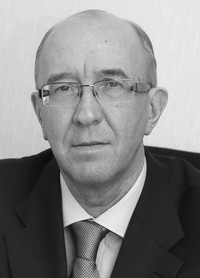FEATURES OF THE AEROBIC ENERGY SUPPLY SYSTEM AS A RESULT OF THE ACTIVITY OF THE CARDIORESPIRATORY SYSTEM
Keywords:
cardiorespiratory system, exercise, respiration, blood circulation, gas exchange, athletes.Abstract
Objective of the study was to identify the features of the aerobic energy supply system as a result of the activity of the cardiorespiratory system, depending on the age of athletes involved in cyclic sports, during bicycle ergometric testing.
Methods and structure of the study. The subjects were athletes involved in endurance sports and, depending on age, the following groups of subjects were formed: 15-16 years old, 17-21 years old, 22-35 years old and 36-60 years old. All of them performed work on a bicycle ergometer with a power of 50, 100, 150 and 200 watts. Each stage of the load lasted 3 minutes, during which the differential rheogram according to Kubizek was recorded, modified by Yu.S. Vanyushin et al., and the indicators of the cardiovascular system were determined: heart rate, stroke volume, minute volume of blood circulation. With the help of a pneumotachograph, indicators of external respiration were determined: respiratory rate, tidal volume, minute respiratory volume. The oxygen utilization coefficient was calculated according to the generally accepted formula.
Results and conclusions. A comprehensive study of the process of adaptation of the cardiorespiratory system of athletes of different ages involved in endurance sports allowed us to identify the possibilities of the aerobic method of energy supply, which depends on the age of the athletes.
In athletes aged 15-16 and 36-60 years, according to the results of our research, it is advisable to develop an external respiration system aimed at increasing the minute volume of respiration, since in this case the aerobic method of energy supply functions better.
Athletes aged 17-21 years should develop a circulatory system that increases the performance of the pumping function of the heart (stroke volume, minute volume of blood), which affects the ability of the heart to eject a larger volume of blood. This will have a positive effect on the aerobic way of energy supply.
Athletes aged 22-35 years should stimulate the gas exchange function associated with an increase in the oxygen utilization factor (UFО2), which is the most optimal. In athletes of this age, apparently, it is advisable to develop this particular method of energy supply.
References
Anokhin P.K. Uzlovyye voprosy teorii funktsionalnoy sistemy [Nodal issues of the theory of functional systems]. Moscow: Nauka publ., 1980. 197 p.
Vanyushin Yu.S., Khairullin R.R. Kardiorespiratornaya sistema kak indikator funktsionalnogo sostoyaniya organizma sportsmenov [Cardiorespiratory system as an indicator of the functional state of the body of athletes]. Teoriya i praktika fizicheskoy kultury. 2015. No. 7. pp. 11-14.
Vanyushin Yu.S., Khairullin R.R., Elistratov D.E. Znacheniye koeffitsiyenta kompleksnoy otsenki kardiorespiratornoy sistemy dlya diagnostiki funktsionalnogo sostoyaniya sportsmenov [The value of the coefficient of a complex assessment of the cardiorespiratory system for the diagnosis of the functional state of athletes]. Teoriya i praktika fizicheskoy kultury. 2017. No. 5. pp. 59-61.
Vanyushin Yu.S., Khairullin R.R., Elistratov D.E., Fedorov N.A. Fedorov Adaptatsiya kardiorespiratornoy sistemy sportsmenov k dvigatelnoy deyatelnosti [Adaptation of the cardiorespiratory system of athletes to motor activity]. Teoriya i praktika fizicheskoy kultury. 2020. No. 2. pp. 30-32.
Ivanova N.V. Faktory, opredelyayushchiye funktsionalnoye sostoyaniye kardiorespiratornoy sistemy sportsmenov [Factors that determine the functional state of the cardiorespiratory system of athletes]. Teoriya i praktika fizicheskoy kultury. 2013. No. 5. pp. 108-111.
Olyashev N.V., Varentsova I.A., Pushkina V.N. Pokazateli kardiorespiratornoy sistemy u yunoshey s raznymi tipami krovoobrashcheniya [Indicators of the cardiorespiratory system in young men with different types of blood circulation]. Ekologicheskaya fiziologiya. 2014. No. 4. pp. 28-33.
Pavlov I.P. Izbrannyye trudy Izbrannyye trudy [Selected works]. Natochin Yu.V. [ed.]. Moscow: Meditsina. 1999. 445 p.
Platonov V.N. Dvigatelnyye kachestva i fizicheskaya podgotovka sportsmenov [Motor qualities and physical training of athletes]. Moscow: Sport publ., 2019. 656 p.
Sudakov K.V. Fiziologiya. Osnovy i funktsionalnyye sistemy [Physiology. Fundamentals and functional systems]. Course of lectures. Moscow: Meditsina publ., 2000. 784 p.
Ukhtomsky A.A. Dominanta [Dominant]. St. Petersburg: Piter publ., 2002. 448 p.
Fedorov N.A., Elistratov D.E., Vanyushin Yu.S. Kompleksnaya otsenka funktsionalnogo sostoyaniya studentov [Comprehensive assessment of the functional state of students]. Kazan: Otechestvo publ., 2014. 86 p.
Bassett, L.R.Jr. Limiting factors for maximum oxygen uptake and determinants of endurans performance. L.R.Jr.Bassett, E.T. Howley. Medicine. Science in Sports. Exercise. 2000. No 32. P. 70-84.
Hottenrott, K. Ist das Superkompesations Model nach aktuell? K. Hottenrott, G. Neumann. Leitungssport, Marz. 2010. pp.13-19.
Kubicek W.G. The Minnecota impedance cariograph-theory and application. – Biomed. Engin. 1974. V.9. No. 9. pp. 410-416.
Lu Xu. On the stucture of movement preparation: Inferences from motor schema theory. Lu Xu, W. Sommer, H. Masaki. Sports Performance, 1st ed. Tokyo: Sprinoper. 2015. pp. 59-66.


